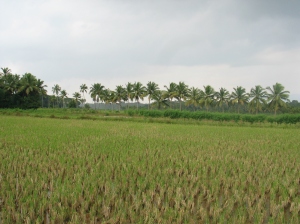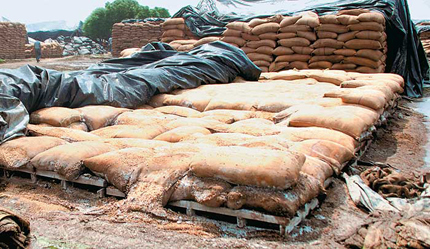So what do the finance minister Arun Jaitley and the Hindi film industry have in common? They both love the number “Rs 100 crore”. The Hindi film industry cannot stop talking about the films that have done a business of Rs 100 crore or more. Jaitley, in his maiden budget speech, used the Rs 100 crore number 29 times, while making allocations to various government schemes.
This has led a lot of experts to comment that Jaitley has spread himself too thin. Whether that turns out to be the case, only time will tell. Nevertheless, in the budget speech, Jaitley, like finance ministers before him, did not talk about the single biggest expenditure of the government.
The single biggest expenditure of the government of India is debt servicing i.e. the interest that it pays on its debt and the money that it spends in repaying it. Governments all over the world, including the Indian government, spend much more than they earn. This difference is referred to as the fiscal deficit and is financed through borrowing. The money is borrowed for a certain period. During the period a certain amount of interest needs to be paid on it. And at the end of the period, the borrowed money needs to be repaid.
Over the years, the government has been spending more than it has earning. Given this, the fiscal deficit has shot up. In 2007-2008, the fiscal deficit of the Indian government had stood at Rs 1,26,912 crore or 2.6% of the GDP. This had shot up to Rs 5,15,990 crore or 5.7% of the GDP, by 2011-2012. The fiscal deficit projected for 2014-2015 stands at Rs 5,31,177 crore or 4.1% of the GDP.
This increase in fiscal deficit has been financed by a greater amount of borrowing. A greater borrowing has meant that the cost of debt servicing for the government has gone up over the years. In 2009-2010, the total debt servicing cost of the Indian government had stood Rs 2,94,857 crore. The fiscal deficit during the course of that year had stood at Rs 4,18,842 crore. Hence, the ratio of the debt servicing cost to the fiscal deficit worked out to 0.7.
By 2013-2014, the total debt servicing cost had shot up to Rs 5,43,267 crore. As the amount of money borrowed went up, so did the interest that needed to paid on it. And, so did the repayments. The fiscal deficit for the year stood at Rs 5,24,539 crore. Hence, the ratio of debt servicing cost to the fiscal deficit shot up to 1.04.
For the current financial year, the total debt servicing cost has been estimated to be at Rs 6,43,301 crore. Interestingly, in the interim budget presented by P Chidambaram in February earlier this year, the number had stood at Rs 6,74,184 crore. How has the number come down by more than Rs 30,000 crore, that Mr Jaitley did not explain. The fiscal deficit for the year has been projected at Rs 5,31,177 crore. Hence, the ratio of the total debt servicing cost to the fiscal deficit is now at 1.21.
What does this ratio tell us? It tells us that the entire borrowing(and a part of the income) of the government of India is being used to repay past borrowing and to pay interest on it. In simple everyday terms it means that I am using one credit card to pay off what is due on another credit card.
In such a scenario, it becomes very difficult for the government to spend money on other important areas. It also explains to a large extent why Jaitley made so many allocations of just Rs 100 crore. If he had the money, he would have probably preferred a higher amount of allocation. Of course, Mr Jaitley cannot be blamed for this mess which he has inherited from the Congress led United Progressive Alliance (UPA) government.
So what is the way out of this financial hole? The revenue receipts of the government(i.e. the money that it earns through tax and non tax revenue) for the year 2007-2008 had stood at 10.2% of the GDP. For the year, 2014-2015, the revenue receipts are at 9.2% of the GDP.
What this tells us clearly is that the revenue receipts of the government have come down and need to go up. How can that be done? The Modi government has been gung ho about getting the black money of Indians stashed abroad back to India. But what about all the black money that is there in the country? Wouldn’t that be easier to recover? While the intention to get back all this black money from abroad is certainly noble, how practical is it? Also, if the idea is to recover black money then why discriminate between those who have managed to transfer the money abroad and those who haven’t.
The Modi government can borrow an idea or two from what happened in Greece. In order to recover black money, the Greek government used Google Earth to track those who have swimming pools and then cross indexed their address with the amount of tax they are paying. Ideas along similar lines which use information technology extensively in order to identify people who are not paying the correct amount of income tax, need to be come up with.
In the budget speech made in February 2013, the then finance minister P Chidambaram had estimated that India had only 42,800 people with a taxable income of Rs 1 crore or more. What this clearly tells us is that a lot of people are not paying income tax.
In a country where 27,000 luxury cars are sold every year, the number of individuals with a taxable income of Rs 1 crore has to be more than 42,800. These individuals, who include property dealers, doctors, chartered accountants etc., need to be made to pay their fair share of income tax.
Of course, any such move will not immediately lead to results. The way to do is to execute a few pilot projects in different parts of the country and identify the big defaulters and get them to pay the income tax. This should be extensively publicized as well, so as t ensure that other similar people start paying the right amount of income tax.
The piece originally appeared in The Asian Age/Deccan Chronicle dated July 11, 2014 under a different headline.
(Vivek Kaul is the author of Easy Money: Evolution of the Global Financial System to the Great Bubble Burst. He can be reached at [email protected])




